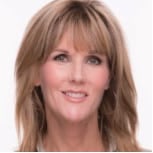Summary
In this session, Sam, Frederick, and Russ explore the complexities of enterprise design and product development. They stress beginning with personal hypotheses and proving them right or wrong, as Sam advocates starting with oneself. Society-wide culture change, rather than just design work, is central to successful enterprise transformation, noted especially by Sam and reinforced by others referencing the role of art, comedy, and social networks. Frederick highlights the challenge of delivering complex system improvements under tight time constraints, advising honesty and aligning project scope accordingly. The panel discusses the tension between radical and incremental innovation, with Sam emphasizing that most changes occur through networked connections rather than disruptive reinventions, though radical innovation requires culturally ready organizations, as noted with Honeywell's example. Russ explains how large audiences, like federal agencies, can adopt shared style guides while retaining customization for their unique needs. The importance of managing legacy systems alongside future-focused teams is highlighted, with the Atari example illustrating structural separation benefits. The panelists warn about technical and organizational debt as long-term obstacles. Sam underscores that culture trumps strategy and suggests embedding user experience improvements into an organization's social fabric, using regular communication channels to build momentum. Overall, the talk stresses that enterprise UX requires patience, cultural sensitivity, incremental progress, and a networked approach to change.
Key Insights
-
•
Start enterprise design projects with yourself to form testable hypotheses before engaging others.
-
•
Enterprise UX work is often more about culture change than just design or technology.
-
•
Transparency about time constraints and realistic scope is crucial when organizations demand rapid delivery.
-
•
Radical innovation in enterprise requires a culturally ready organization; otherwise, incremental improvements are more feasible.
-
•
Complex legacy systems require maintaining separate teams focused on current operations and future innovation to avoid stagnation.
-
•
Technical and organizational debt are major causes of prolonged pain during system migrations or upgrades.
-
•
Shared design standards can coexist with agency-level customization to balance familiarity and unique needs, as Russ explains with 18F.
-
•
Users can derive a sense of status or accomplishment from mastering complex legacy systems, making change socially challenging.
-
•
Embedding UX progress into an organization involves building strategic support and grassroots momentum through social networks and storytelling.
-
•
Measuring software like employee performance—reviewing and retiring underperforming systems—is essential to avoid wasted resources.
Notable Quotes
"Start with yourself. It’s a great place to get a hypothesis, and then prove yourself wrong or right."
"What we underestimate is that enterprise work is essentially culture change, not just design work."
"Do what you can, where you are, with what you have — that’s how you show you can deliver."
"Only work with companies willing to invest the time required; otherwise, deliver what you can and be honest about it."
"Radical innovation isn’t the main form of change; the main form is connections, like open APIs with massive downstream effects."
"If you create a separate team to work on the future, make sure they stay focused on the future, or you’ll never get out of the trap."
"The moment you spend more on maintaining legacy than creating the future, you’re probably doing the wrong thing."
"Users sometimes enjoy the complexity of old systems because mastery grants them elite social status internally."
"Culture trumps strategy. When culture derails your best plans, you need both strategic air cover and grassroots momentum."
"Building a distribution list of user-centered design success stories created a groundswell with 1,200 subscribers hungry for more."
Or choose a question:
















More Videos

"When the whole team is trained in design thinking, they are measurably more aligned, more efficient, and more agile."
Doug PowellClosing Keynote: Design at Scale
November 8, 2018

"Sometimes with kids, you just have to get artifactual data or creative outputs because they can’t always articulate."
Mila Kuznetsova Lucy DentonHow Lessons Learned from Our Youngest Users Can Help Us Evolve our Practices
March 9, 2022

"Evan actually spent less than 15 minutes on the essay, and instead of working on homework, he was writing a letter to his significant other back home in Detroit."
Sarah GallimoreInspire Progress with Artifacts from the Future
November 18, 2022

"We can’t complain about not having a seat at the table if we don’t offer one of our own."
Lada Gorlenko Sharbani Dhar Sébastien Malo Rob Mitzel Ivana Ng Michal Anne RogondinoTheme 1: Discussion
January 8, 2024

"Think of AI as an additional team member pushing your creative thinking and expanding your idea range."
Alnie FigueroaThe Future of Design Operations: Transforming Our Craft
September 10, 2025

"Research is not as easy as putting on a shoe and just doing it; it requires careful consideration and alignment with imperatives."
Landon BarnesAre My Research Findings Actually Meaningful?
March 10, 2022

"Truly listening can push us beyond empathy to respect and reflection."
Emily EagleCan't Rewind: Radio and Retail
June 3, 2019

"There is no solid way to control the course of your re-platforming project; being flexible is essential."
Malini RaoLessons Learned from a 4-year Product Re-platforming Journey
June 9, 2021

"Collaborate and involve design early and often to better align on user goals and reduce friction."
Asia HoePartnering with Product: A Journey from Junior to Senior Design
November 29, 2023
Latest Books All books
Dig deeper with the Rosenbot
What training and certification methods support non-researchers running low-risk UX studies?
How can national development agencies strategically manage their innovation portfolios to balance risk and impact?
What role does continuous learning and curiosity play in maintaining sustainable design practices?



















